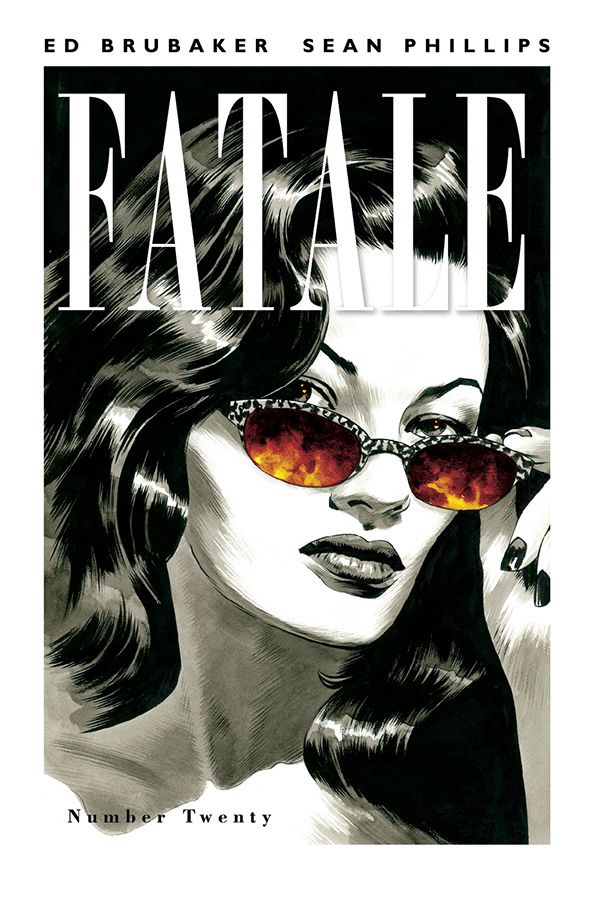Even more than usual, "Fatale" #20 by Ed Brubaker and Sean Phillips is a dark tale. The violence and Lovecraftian horror elements have set the atmosphere of much of the series so far, but their supernatural origin makes it easy to be amused or entertained as well as chilled or repulsed. Jo's troubles in "Curse the Demon" are more realistic and thus more tragic.
Brubaker's use of the archetype of the femme fatale is by now a layered and thoughtful exploration of the power of female sexual power over and victimization under heterosexual men. While Jo was more unconscious of her power in the flashbacks to her past, and seemed to abuse and enjoy it more, "Fatale" #20 shows the destructive features of such power for the femme fatale and men who can't seem to help themselves around her, about the logical extremes of the sexual gaze.
Brubaker is good at advancing the past and present of characters within the same story. The structure of "Fatale" #20 is straightforward with a series of short connected flashbacks into Jo's past, and then a search, confrontation and rescue. The narrative is dominated by text boxes of Jo's thoughts. While the stream of thoughts is unrealistically poetic - no real person's thoughts so gracefully move from subject to subject - Brubaker's prose is strong enough to carry the reader for many dialogue-less pages on just the rhythm of words.
"Fatale" #20 continues to tease but also give the reader clues to the frustrating enigma of Jo - who she is, why she's stuck the way she is, whether she has any ultimate agency over her fate. As usual, she comes off partly like a real woman and partly like a mythic creature. No real woman would ever be so simultaneously powerful and helpless as Jo is, but her experiences strike a chord. In the last storyline, the point of view shifted to Lance and other characters. Here, Brubaker focuses only on Jo and Nicholas, and the first half of "Fatale" #20 rekindles reader sympathy for Jo. It's a good move, given her seeming lack of remorse for murder and psychological mayhem in the flashbacks of recent issues. Brubaker opens the story with a quote from Nietzsche about the horror of imagined immortality, and it's a fitting beginning for a peek into Jo's current state of mind. Her predominant emotion is world-weariness, fortified by knowledge but still fragile with despair in the face of her inability to break the pattern of her existence.
Phillips' art is especially strong on pacing and emotional expression in "Fatale" #20. His panel composition carefully matches the rhythm of Brubaker's words when Jo thinks, "It has to end. It has to." Jo has played a part, however unthinking and unwilling, in evil events, and she has been shown to act from self-preservation and even selfishness. Phillips' facial expressions are good at getting across her terror and desperation and ultimately, it's difficult not to see and respect how Jo is still human underneath what she is and what she's become. She still feels the weight of her actions, even when her actions are terrible.
In the second half of the story, Jo is responsible for more death and destruction. Brubaker and Phillips put the reader in Nick Lash's mind, and on the final page, his retrieval of a memory ties together past and present, ending "Curse the Demon" on an ominous note. "Fatale" #20 reinforces the paradoxical siren/damsel-in-distress dichotomy of the femme fatale for an issue that is particularly strong on characterization and tone.

